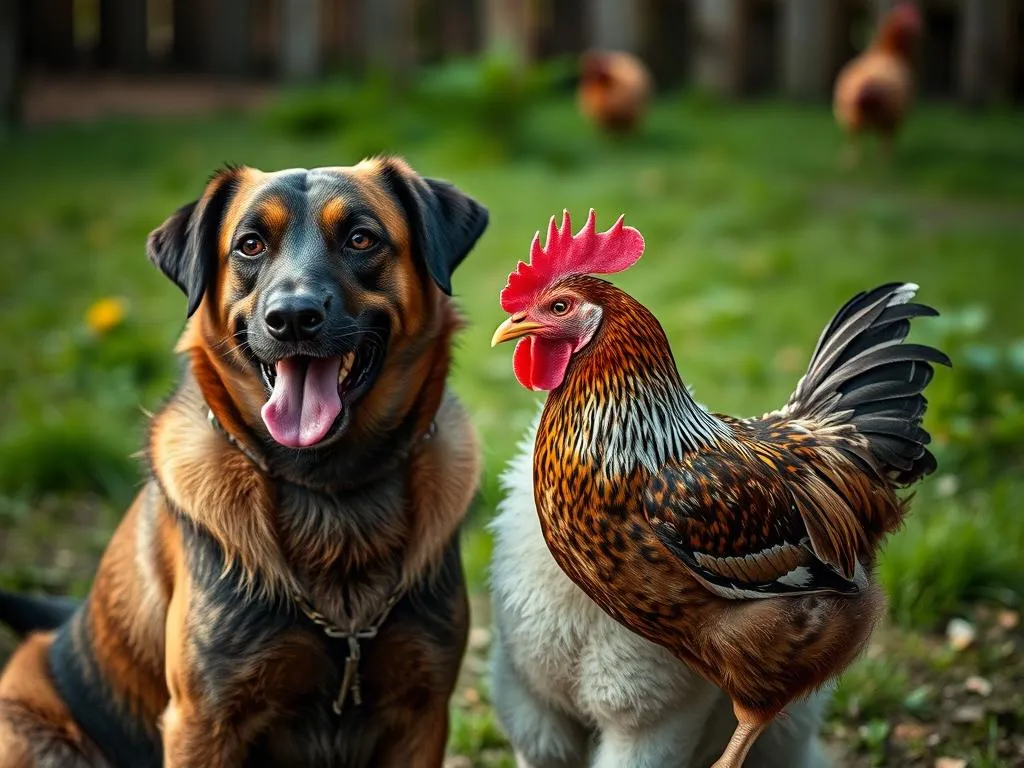
Introduction
In recent years, the trend of keeping dogs and chickens together in homesteads and backyards has gained significant popularity. This unique co-housing arrangement appeals to many pet owners and farmers alike, as it combines the joys of companionship with the practical benefits of animal husbandry.
The purpose of this article is to explore the various dynamics involved in co-housing dogs and chickens, providing you with insights, tips, and best practices to create a harmonious environment for both species.
Benefits of Co-Housing
The advantages of having dogs and chickens together are manifold. For one, dogs can serve as effective guardians for your flock, deterring potential predators. Chickens, on the other hand, can help control pests and provide natural fertilizer for your garden. This symbiotic relationship enhances the overall utility of your homestead and contributes to a more vibrant ecosystem.
Overview of Topics Covered
In this article, we will cover the following topics:
- Understanding the instincts of dogs and the behavior of chickens
- Preparing your homestead for co-housing
- Best practices for training and care
- Addressing common concerns and challenges
- Real-life case studies of successful co-housing scenarios
Understanding the Dynamics Between Dogs and Chickens
Natural Instincts of Dogs
Dogs are known for their diverse instincts, which can vary significantly among breeds. Some dogs have strong herding instincts, while others exhibit a pronounced prey drive, leading them to chase smaller animals, including chickens. Understanding these traits is crucial for ensuring a safe environment for both your dog and your flock.
Training Considerations
Before introducing your dog to chickens, it’s essential to consider the breed’s characteristics. Herding breeds, like Border Collies and Australian Shepherds, may be more amenable to living with chickens due to their trainability and desire to please. On the other hand, terriers and hounds may have a stronger instinct to chase and may require more intensive training.
Chicken Behavior
Chickens exhibit unique social structures and hierarchies known as the pecking order. Understanding this structure is vital for maintaining harmony within your flock and minimizing stress when introducing them to dogs.
Fear Responses
Chickens are naturally skittish creatures. They can display fear responses to perceived threats, including the presence of dogs. Recognizing these responses can help you manage interactions better and create a safer environment for your poultry.
Preparing Your Homestead
Space Requirements
Creating designated areas for both dogs and chickens is essential for minimizing stress and potential conflicts. Provide separate living spaces and ensure that your dog has a safe area where they can roam without access to the chickens.
Fencing and Barriers
Investing in quality fencing is critical when keeping dogs and chickens together. Consider using sturdy fencing that can withstand the efforts of both dogs and curious chickens. Options may include welded wire, chain link, or stock fencing, with buried barriers to prevent digging.
Introducing Dogs and Chickens
Gradual Introduction Techniques
Introducing your dog to your chickens should be a slow and gradual process. Start by allowing your dog to observe the chickens from a distance, gradually decreasing the space between them as they become more comfortable.
Supervised Interactions
Always supervise initial interactions between your dog and chickens. This close monitoring allows you to intervene immediately if your dog shows signs of aggression or if the chickens become overly stressed.
Best Practices for Co-Housing
Training Your Dog
Training is vital for the successful co-housing of dogs and chickens. Start with basic commands like “sit,” “stay,” and “leave it.” These commands can help manage your dog’s behavior around your chickens.
Desensitization Techniques
Desensitization is another valuable training technique. Gradually exposing your dog to chickens in a controlled manner can help reduce their natural instinct to chase. Use treats and positive reinforcement to reward calm behavior.
Chicken Care and Enrichment
Creating safe spaces for your chickens is essential for their well-being. Ensure they have access to secure coops and shaded areas where they can retreat if they feel threatened.
Enrichment Activities
Chickens thrive on mental stimulation. Incorporating enrichment activities, such as foraging for treats or providing toys, can keep them engaged and reduce stress levels, contributing to a more relaxed atmosphere for both species.
Addressing Common Concerns
Safety Issues
Safety is a primary concern when keeping dogs and chickens together. Incidents of dog attacks on chickens can occur, especially if proper precautions are not taken.
Preventative Measures
To reduce the risk of attacks, ensure that your dog is well-trained and that chickens have secure areas to retreat to. Regularly assess your dog’s behavior around chickens and make adjustments to training as necessary.
Behavioral Challenges
Understanding the signs of stress in chickens can help you manage their well-being effectively. Signs include feather plucking, decreased egg production, and unusual vocalizations.
Managing Aggressive Behavior in Dogs
If your dog exhibits aggressive tendencies toward chickens, consult a professional trainer or animal behaviorist. They can provide tailored strategies to correct these behaviors and ensure a safe environment for all animals.
Case Studies: Successful Co-Housing Scenarios
Homesteader Experiences
Many homesteaders have successfully navigated the challenges of keeping dogs and chickens together. Personal accounts often highlight the importance of patience and consistent training.
For instance, one homesteader shared how her Labrador Retriever initially chased the chickens but learned to coexist peacefully after consistent training and gradual introductions.
Lessons Learned
Common challenges include managing the initial excitement of the dog and ensuring that the chickens feel safe. Many homesteaders emphasize the significance of providing separate spaces and maintaining positive interactions during introductions.
Expert Insights
Veterinarians and animal behaviorists offer invaluable advice on keeping dogs and chickens together. They recommend routine veterinary check-ups to ensure the health of both species and monitoring for any signs of stress or aggression.
Conclusion
In summary, keeping dogs and chickens together can be a rewarding experience for both the animals and their owners. By understanding the natural instincts of dogs, the behavior of chickens, and implementing best practices for training and care, you can create a harmonious environment for your homestead.
If you’re considering this co-housing arrangement, take the time to research and prepare adequately. The journey may have its challenges, but with patience and education, it can lead to a fulfilling and productive relationship between your dogs and chickens.
Feel free to share your experiences or ask questions in the comments below. Creating a supportive community for those involved in keeping dogs and chickens together can lead to shared knowledge and mutual growth.









